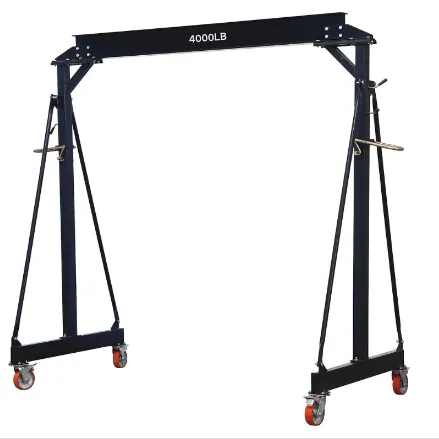moving heavy machinery
Moving Heavy Machinery A Comprehensive Guide
Moving heavy machinery is a fundamental aspect of various industries, including construction, mining, and manufacturing. It involves not only the physical act of relocating large and often cumbersome equipment but also a series of logistical considerations that ensure safety, efficiency, and adherence to regulations. This article will outline the essential factors to consider when moving heavy machinery, providing insights that can help businesses streamline their operations.
Understanding Heavy Machinery
Heavy machinery encompasses a wide range of equipment, such as bulldozers, cranes, excavators, and loaders. These machines are vital for excavation, lifting, and transporting materials on job sites. However, their size and weight pose unique challenges when it comes to relocation. Understanding the specifications of each piece of equipment, including its weight, dimensions, and any special handling requirements, is the first step in planning a move.
Planning the Move
The planning stage is critical for a successful relocation of heavy machinery. It involves several key steps
1. Assess the Destination Before moving the machinery, it’s essential to evaluate the destination site. Factors such as access roads, surface conditions, and overhead clearances should be considered. If the site presents obstacles, such as narrow paths or low bridges, alternative routes or equipment may need to be selected.
2. Choose the Right Equipment Depending on the size and weight of the machinery, different transport methods may be required. Flatbed trucks, lowboy trailers, and specialized equipment transport vehicles are common choices. Selecting the right vehicle is crucial to ensure the machinery is transported safely and efficiently.
3. Securing Permits Many jurisdictions require permits for transporting oversized loads. It is important to research local regulations and acquire the necessary permits well in advance of the move to avoid fines or delays.
4. Establish a Timeline Coordinating the logistics of moving heavy machinery requires careful timing. Creating a realistic timeline that takes into account travel time, loading and unloading hours, and potential delays due to weather or traffic is essential for minimizing downtime.
Safety Considerations
moving heavy machinery

Safety is paramount when moving heavy machinery. Both the operators and bystanders must be protected from potential hazards. Here are some safety measures to implement
- Training All personnel involved in the moving process should be properly trained in operating the machinery and handling transport vehicles. Ensuring that operators are certified and experienced can reduce the risk of accidents.
- Personal Protective Equipment (PPE) Wearing appropriate PPE, such as hard hats, gloves, and safety boots, is a must. This protects workers from injuries that may occur during the moving process.
- Inspection Before moving the equipment, a thorough inspection should be conducted to identify any issues that could pose risks during transportation. This includes checking fluid levels, ensuring that load securement points are in good condition, and confirming that safety features are operational.
Execution of the Move
The actual process of moving heavy machinery can be broken down into a few critical steps
1. Loading the Machinery This stage requires precision, as improperly loading the machinery can lead to damage. Using ramps for loading and unloading can facilitate safer transitions, and securing the equipment with chains or straps will prevent movement during transport.
2. Transport Once loaded, the transport vehicle should be driven cautiously, keeping in mind the weight of the load. Avoiding sudden stops or sharp turns is crucial, as these can affect the stability of the machinery.
3. Unloading Upon arriving at the destination, unloading the machinery should be done with the same attention to detail as the loading process. Ensure the area is clear of personnel, and use appropriate equipment, such as cranes or forklifts, for larger items.
Conclusion
Moving heavy machinery is a complex process that requires careful planning, safety measures, and execution. By understanding the equipment, preparing adequately, and following safety protocols, businesses can successfully relocate their machinery, minimizing disruptions and enhancing operational efficiency. As industries continue to evolve, mastering the art of moving heavy machinery remains a vital skill for professionals in the field.
-
Unlock Seamless Relocation with Our Heavy Equipment Moving ExpertiseNewsJun.06,2025
-
Unleash Unrivaled Flexibility with Our Adjustable Gantry CraneNewsJun.06,2025
-
Unleash Heavy-Duty Efficiency with Our Industrial Gantry Crane SolutionsNewsJun.06,2025
-
Revolutionize Steel Handling with Our Magnetic Lifter RangeNewsJun.06,2025
-
Master Equipment Mobility with Premium Machinery Mover SolutionsNewsJun.06,2025
-
Elevate Your Material Handling with Magnetic Lifter TechnologyNewsJun.06,2025
-
YS Permanent Lifting Magnets: The Smarter Way to Handle SteelNewsMay.22,2025
